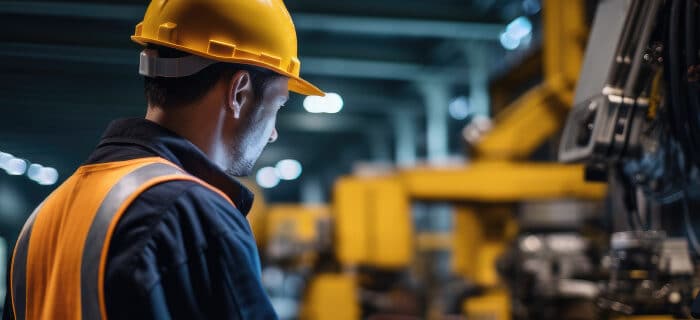What Are the Advantages of Automated Welding?
What Are the Advantages of Automated Welding?

Welding, the essential backbone of industries like oil and gas, chemical, petrochemical, and industrial manufacturing, has undergone significant transformation with the advent of technology. As these sectors continuously strive for precision, efficiency, and safety, automated welding emerges as a game-changer.
By marrying traditional craftsmanship with modern automation, we witness a new era where consistent quality meets unparalleled efficiency.
In this exploration, we’ll dive into the profound advantages of automated welding and its increasing significance in the ever-evolving industrial landscape.
The Evolution of Welding
History of Traditional Welding Methods
Welding has a rich history marked by a series of innovations:
- Blacksmith Era: Ancient techniques of hammer welding, primarily manual and labor-intensive.
- 19th Century: Introduction of electric arc welding, revolutionizing the field.
- Skill and Challenges: Traditional methods, though effective, required:
- High degree of skill
- Extensive labor
- Consistency concerns
- Safety issues
Rise of Automation in Welding
The move towards automation was driven by the evolving needs of the industry:
- Demand-Driven Transition: The industry’s pressing needs were:
- Speed and efficiency
- Greater precision
- High-volume production
- Automated Welding Systems: Introduced innovations such as:
- Computer-controlled robotics
- Advanced programming
- Precision and consistency at unprecedented levels
Understanding this evolution is key as it sets the stage for our exploration into the many advantages of automated welding in contemporary industries.
Main Advantages of Automated Welding
Consistent Quality
- Reduced Human Error: Automated systems eliminate common mistakes stemming from human fatigue or oversight.
- Uniform Weld Bead Profiles: Every weld is consistent, ensuring structural integrity across the board.
Increased Production Speed
- Continuous Operations: Automated systems can work around the clock without the need for breaks, dramatically increasing output.
- Faster in Repetitive Tasks: Automated welding excels in repetitive operations, significantly reducing production time.
Cost Efficiency
- Material Waste Reduction: Precise control ensures optimal material usage, reducing waste.
- Minimized Rework: Consistency leads to fewer defects, reducing the need and cost of rework.
Enhanced Safety
- Reduced Human Risk: With fewer manual operations, there’s a reduced risk of workplace injuries.
- Hazardous Environment Suitability: Robots can handle high-risk environments, ensuring human workers aren’t exposed to undue hazards.
Flexibility and Scalability
- Task & Project Adaptability: Automated systems can be reprogrammed for various tasks, making them adaptable to different projects.
- Complex Weld Pattern Programming: Intricate designs and patterns can be programmed with precision.
Optimized Material Usage
- Precise Welding Control: Every weld is optimized for the amount of material, ensuring neither excess nor deficit.
- Reduction in Over/Under-Welding: The system ensures that just the right amount of material is used, every time.
These advantages underline the transformative impact of automated welding, offering industries both immediate and long-term benefits.
See: The Advantages and Applications of Automated Welding Technology
Role of Automated Welding in Key Industries
Oil and Gas
- Pipeline Construction & Maintenance: Automated welding ensures long-lasting bonds crucial for the transport of oil and gas, reducing the potential for leaks and maintenance downtime.
- Pressure Vessels: Containers designed to hold gases or liquids at varying pressures demand the highest welding precision. Automated welding ensures flawless seams, leading to vessels that can reliably withstand intense pressures, crucial for safety, vessel longevity, and overall operational efficiency.
Learn: The Pressure Vessel Guidebook
Chemical and Petrochemical
- Leak-proof Welds for Containment: The precision of automated welding is pivotal in preventing leaks, especially with hazardous chemicals, ensuring safety and containment.
- Corrosive Material Environment Welds: Automated systems consistently deliver welds that withstand corrosive environments, preserving the longevity of infrastructure.
Industrial Manufacturing
- Mass Production Integration: Automated welding boosts production rates, especially in assembly lines where uniformity is key.
- Custom Complex Fabrication: For specialized structures or equipment, automated welding provides the precision needed in intricate fabrications, meeting unique industrial specifications.
Automated welding’s adoption in these sectors not only revolutionizes production capabilities but also sets new standards for quality and safety. As technology progresses, its applications within these fields are poised to expand, solidifying its crucial role.
Overcoming the Myths: Addressing Common Misconceptions
A. Job Opportunities & Automation
- Myth: Automated welding compromises job opportunities, leading to unemployment in the welding industry.
- Reality: While some manual jobs may reduce, automation introduces new specialized roles, such as system programming, maintenance, and oversight. Training and upskilling can pivot workers to these higher-tech, often higher-paying, positions.
See: American Welding Society – Robots Welding
B. Maintenance of Automated Systems
- Myth: Automated welding systems are intricate, expensive, and difficult to maintain.
- Reality: While there’s an initial learning curve, modern automated systems are designed for user-friendly maintenance. Regular checks and software updates streamline the process, often leading to longer operational lifespans and fewer unexpected downtimes than manual equipment.
Dispelling these misconceptions is essential. As industries evolve, understanding the real impact and benefits of automated welding ensures informed decisions, optimizing growth and innovation.
Future of Automated Welding
Automated welding is on the cusp of a technological transformation. The integration of AI and machine learning promises smarter systems. AI-driven predictive maintenance can foresee equipment needs, minimizing downtime, while machine learning refines welding techniques, ensuring optimal results with every use.
The scope of automated welding will expand, finding relevance in diverse sectors, from aerospace to underwater construction. However, these advancements also spotlight the need for specialized training. As manual roles decrease, the demand for expertise in system oversight and advanced maintenance will rise. Educational institutions will likely adapt, tailoring curricula to these evolving industry needs.
In a nutshell, the future sees automated welding seamlessly blending cutting-edge technology with human specialization.
Conclusion
Automated welding, with its myriad advantages, represents the harmonization of traditional craftsmanship and modern technology. As it reshapes industries from oil and gas to manufacturing, it offers enhanced efficiency, precision, and safety. Embracing its potential not only optimizes current processes but also paves the way for future innovations, underscoring its pivotal role in the evolving industrial landscape.
NOOTER Specialty Services: Your Premier Choice for Automated Welding
When considering the future of your operations and the undeniable benefits of automated welding, don’t settle for anything less than the best.
Choose NOOTER Specialty Services for your next project.
See: NSS Services
With unmatched expertise, precision, and a relentless commitment to excellence, we’re poised to elevate your industry endeavors to unparalleled heights of innovation.





